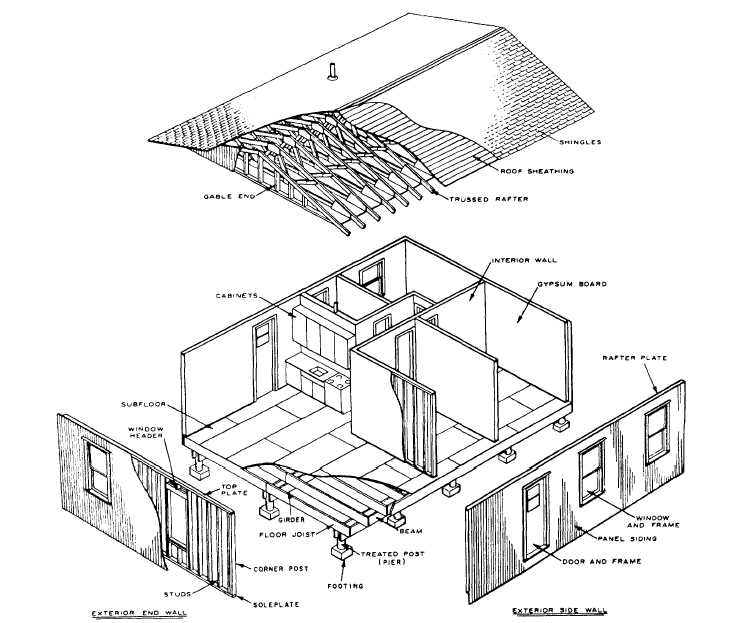The ability of the earth to support a load is called its soil-bearing capacity. This varies considerably with different types of soil. A soil of a given bearing capacity bears a heavier load on a wide foundation or footing than on a narrow one.
VERTICAL STRUCTURAL MEMBERS
In heavy construction, vertical structural members are high-strength columns. (In large buildings, these arc called pillars.) Outside wall columns and inside bottom-floor columns usually rest directly on footings. Outside wall columns usually extend from the footing or foundation to the roof line. Inside bottom-floor columns extend upward from footings or foundations to the horizontal members, which, in turn, support the first floor or roof, as shown in figure 2-2. Upper floor columns are usually located directly over lower floor columns.
In building construction, a pier, sometimes called a short column, rests either directly on a footing, as shown in the lower center of figure 2-3, or is simply set or driven into the ground. Building piers usually support the lowermost horizontal structural members.

Figure 2-3. - Exploded view of a typical light-frame house.
Continue Reading